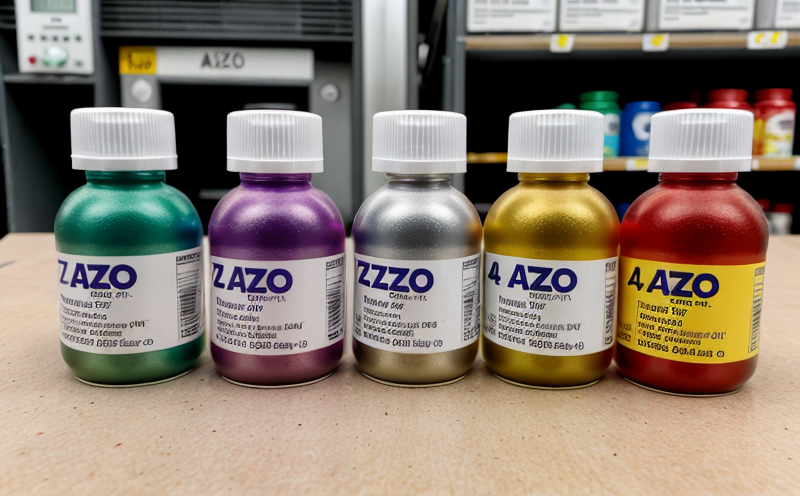GB T 30157 Determination of phthalates and chemical residues
The GB/T 30157 standard is a cornerstone for ensuring the safety and compliance of plastic products in China. This test method specifically addresses the determination of phthalates, which are common plasticizers used to increase flexibility or softness in plastics such as PVC (polyvinyl chloride). The presence of phthalates can pose health risks if they leach out from products into the environment or through contact with human skin.
The standard covers the quantitative analysis of various types of phthalates, including DEHP (dioctyl phthalate), DBP (dibutyl phthalate), and BBP (benzyl butyl phthalate). These chemicals are not only used in PVC-based products like flooring, wall coverings, and medical devices but also in other materials that might come into contact with humans. The test method is critical for ensuring compliance with national safety regulations.
The GB/T 30157 specifies the use of solvent extraction followed by gas chromatography (GC) or liquid chromatography (LC) coupled with mass spectrometry (MS). This approach allows for precise quantification and identification of phthalates present in a given sample. The procedure involves the following steps:
- Sampling: Collect representative samples from production batches or end-use products.
- Preparation: Extract phthalates using appropriate solvents to ensure thorough dissolution of the plasticizers. The extraction process is critical for accurate quantification.
- Analytical Procedure: Inject the extracted solution into either a gas chromatograph or liquid chromatograph, depending on the specific requirements and the nature of the sample. The instrument then separates the components based on their chemical properties, allowing for precise measurement.
The test results provide quantitative data on phthalate levels in parts per million (ppm), which are then compared against safety thresholds set by relevant national or international standards. Compliance with these limits is essential to prevent potential health risks associated with prolonged exposure to high concentrations of phthalates.
Understanding the implications of using this standard extends beyond compliance for manufacturers. It also allows companies to make informed decisions about their product formulations, ensuring they meet both domestic and export market requirements. For instance, many international markets have stricter regulations regarding the use of certain phthalates due to concerns over endocrine disruption.
The significance of GB/T 30157 lies in its role as a regulatory tool that helps protect public health and the environment by minimizing the release of harmful chemicals into the ecosystem. By adhering to this standard, manufacturers demonstrate their commitment to sustainability and safety, which is increasingly important for building consumer trust.
Moreover, compliance with such standards can help companies avoid potential legal issues and costly recalls or product bans. In an era where environmental consciousness is paramount, demonstrating adherence to stringent testing protocols like GB/T 30157 can be a differentiating factor in the competitive market landscape.
Why It Matters
The determination of phthalates and chemical residues using the GB/T 30157 standard is crucial for several reasons:
- Safety Concerns: Phthalates have been linked to various health issues, including reproductive disorders and endocrine disruption. Ensuring compliance with this standard helps mitigate these risks.
- Licensing and Compliance: Many industries require adherence to specific standards for market entry or ongoing operation. The GB/T 30157 is one such requirement that ensures products meet national safety norms.
- Environmental Impact: By reducing the presence of harmful chemicals in the environment, this testing contributes to overall environmental sustainability.
In summary, compliance with GB/T 30157 not only safeguards public health but also supports sustainable business practices, enhancing both product safety and corporate reputation.
Why Choose This Test
Selecting the GB/T 30157 Determination of phthalates and chemical residues test is advantageous for several reasons:
- Accurate Quantification: The use of advanced analytical techniques ensures precise measurement of phthalate levels.
- Comprehensive Coverage: This standard covers multiple types of phthalates, providing a holistic assessment of the chemical residues present in samples.
- Regulatory Compliance: Adherence to this test method is essential for meeting national and international safety standards.
- Enhanced Product Quality: By ensuring compliance with GB/T 30157, manufacturers can improve the quality of their products, leading to increased customer satisfaction and loyalty.
The reliability and accuracy of this test make it indispensable for maintaining high standards in product safety and environmental responsibility.
Quality and Reliability Assurance
The quality and reliability assurance of GB/T 30157 are paramount to the success of any testing process. This section outlines key factors that ensure the accuracy and consistency of results:
- Standardized Procedures: The test follows internationally recognized guidelines, ensuring uniformity in the extraction and analytical processes.
- Sophisticated Equipment: Advanced chromatography instruments are used to achieve high precision and accuracy in measuring phthalate concentrations.
- Dedicated Laboratories: Our laboratories are equipped with state-of-the-art facilities and experienced personnel, providing a robust environment for accurate testing.
We employ rigorous quality control measures throughout the entire testing process to ensure that every result meets stringent standards. This commitment to excellence is reflected in our consistently reliable results, which have been validated through numerous successful tests across various industries.





